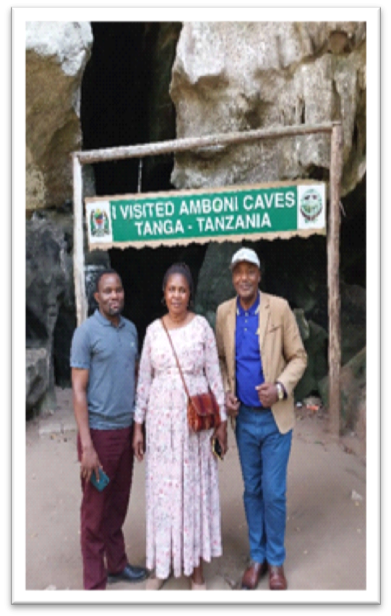On 25th July 2024, 72 pupils of class 3, 4, 5, 6 and 7, accompanied by one of our School Directors, a school accountant and four teachers, travelled to Tanga to have a one-day study tour to Amboni Caves and Tanga Port in Tanga region on 26th July, 2024. The purpose of this trip was to learn about the natural history of the caves, explore their unique features, and understand their cultural significance. It was a thrilling and educational experience for everyone.
On 26th July, 2024, at 8:00 in the morning, we travelled by our 2 buses from Tanga town to the Amboni Caves which are located about 8 kilometers from Tanga town center where we stayed. When we arrived, we were welcomed by a guide who gave us a brief history of the caves. He explained that the Amboni Caves are the most extensive limestone caves in East Africa, estimated to be over 150 million years old. The caves are known for their fascinating rock formations and have been a site of historical and cultural significance for the local people.
Thereafter, we began our exploration of the caves. As we entered, we were amazed by the cool, damp atmosphere and the darkness inside. Our guide led us through the narrow passages, pointing out the various stalagmites that have formed over millions of years. Some of the rock formations resembled animals, humans, and even familiar objects, which made the experience even more interesting. The guide also told us about the legends and stories associated with the caves. For example, there is a formation that locals believe resembles Virgin Mary, and another that looks like a ship. We learned that the caves have been used for traditional rituals and ceremonies by local tribes.
During our tour, we also learned about the ecosystem within the caves. The guide explained how bats and other small creatures live in the cave and how they have adapted to the dark environment. We were reminded of the importance of preserving such natural sites for future generations.

After spending several hours exploring, the caves, we gathered outside discussing what we had learned. The visit to Amboni Caves was an incredible experience that taught us about geology, history, and the cultural importance of natural sites. We left with a greater appreciation for Tanzania’s natural heritage. In fact, the study tour to Amboni Caves was not only educational but also a lot of fun. We look forward to more trips like this in the future. We then boarded the buses and went to Tanga port which is one of the oldest and most important ports in Tanzania. The purpose of this trip was to learn about the operations of a seaport, understand its importance to the economy, and observe how goods are transported and managed. The visit was both educational and exciting. Upon arrival, we were warmly welcomed by the port officials, who gave us a brief introduction to the port. They explained that Tanga Port has been operational since the late 19th century and is a key hub for export of sisal, coffee, and other goods from the northern regions of Tanzania. The port also handles imports such as machinery, vehicles, and various consumer goods. Afterwards, we were taken on a guided tour of the port facilities. The first stop was the cargo handling area, where we saw large cranes lifting containers from ships and placing them onto trucks. The port officials explained the process of loading and unloading ships, and how goods are stored in warehouses before being distributed. We then visited terminal, where we observed how containers are loaded and organized. We learned about the importance of careful planning and logistics in ensuring that goods are handled efficiently. The officials also talked about the safety measures in place to protect workers and prevent accidents at the port. During the tour, the officials emphasized the critical role that Tanga Port plays in the economy of Tanzania. They explained how the port facilitates trade, supports businesses, and creates jobs for many people in the region. The visit to Tanga Port was an eye-opening experience that gave us a deeper understanding of how ports function and their importance in global trade. It was fascinating to see the behind-the-scenes operations of a seaport, and we left with a greater appreciation for the work done at Tanga Port.

